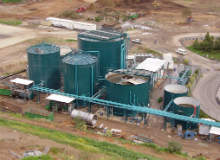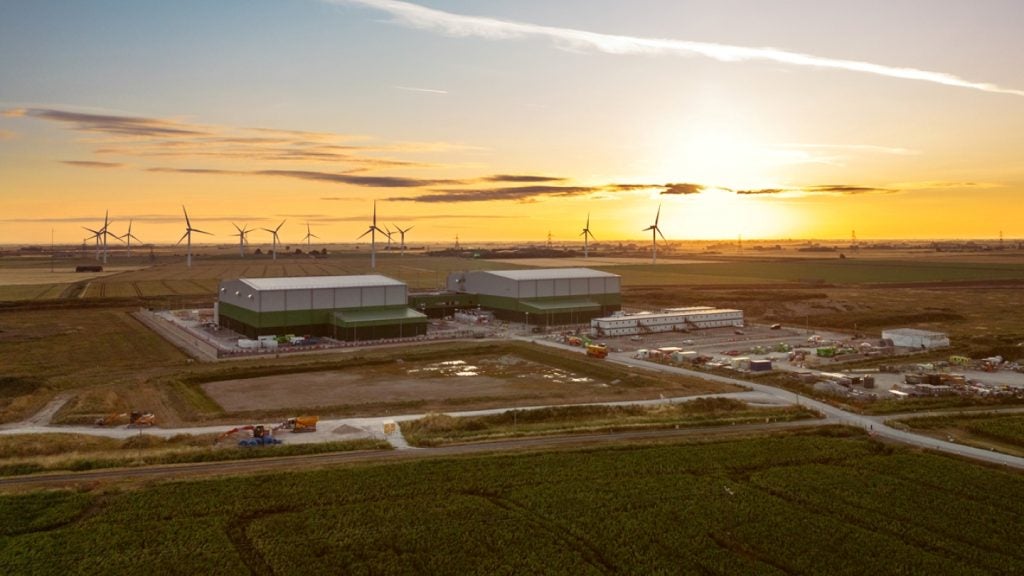

A couple of decades ago, the primary aim of anaerobic digestion (AD) was recycling waste at sewage plants to bring water safely back to land, and the energy gained was a bonus. Companies have since realised the value in this energy, and in recent years AD technology has been optimised to make the most of it.
The AD industry has been steadily growing over the past five years or so, and currently there are over 500 operational plants in the UK. While the sewage treatment sector has been effective for quite a long time, more recent growth in the field has come from food waste treatment, treating both household waste collected by councils and also the commercial waste gathered from food and drink production businesses.
However, the government has recently reduced support for AD projects in the UK by ending an initiative launched in 2010 to encourage deployment of small-scale, low-carbon power generation in the country, and also slashing the allocation of Feed-in Tariff capacity to just 20MW.
The Department of Energy and Climate Change (DECC, which has now been merged with the business department to form the Department for Business, Energy and Industrial Strategy), proposed a consultation, which was open until 7 July. It suggested that projects under 250KW should get their support reduced from 8.21p/kWh to 5.98p/kWh, and those larger than 5,000KW should receive no subsidies at all.
See Also:
“Our tariff-setting methodology considers AD installations claiming RHI [Renewable Heat Incentive] payments, relying on 100% food waste as their feedstock and receiving a gate fee of £20 per tonne,” the department stated. “Analysis shows that such installations are able to make sufficient revenues to make the deployment of the plant viable and achieve a 9.1% rate of return without support from the generation tariff.”
How well do you really know your competitors?
Access the most comprehensive Company Profiles on the market, powered by GlobalData. Save hours of research. Gain competitive edge.

Thank you!
Your download email will arrive shortly
Not ready to buy yet? Download a free sample
We are confident about the unique quality of our Company Profiles. However, we want you to make the most beneficial decision for your business, so we offer a free sample that you can download by submitting the below form
By GlobalDataUnjustified cuts and untapped potential
The Anaerobic Digestion and Bioresources Association (ADBA) disagreed that this was an appropriate plan. It said that removing subsidies in this way is unjustified, because it will kill off projects as the restrictions to plant sizes and feedstocks will make it difficult to deploy viable AD plants using waste, crops or agricultural residues.
The association said this consultation “does nothing to address DECC’s fundamental lack of ambition for AD and community-scale renewables.”
“Just a couple of years ago the industry was developing around about 60MW within the year, so it's falling well short of what we have proven that we can do,” says ADBA head of policy Matt Hindle. “So there's potential out there that's not being met at the moment.”
Not only has the government reduced the tariff levels available but it has also put a cap on the number of new projects that can be supported by the Feed-in Tariff in any year. Hindle says the effects of this will really be shown with new developments.
“The existing plants have their support locked in for 20 years, so it simply means that we won’t be able to develop the new capacity that our members wanted to deliver,” he says. “There are well over 400MW worth of plants in the planning system.”
If the tariff was raised to 100MW, which Hindle says is a very realistic level, then by winter 2018 that could add 10% to the electricity supply margin.
“It's a base-load form of electricity that generates all year round,” Hindle says. “So it would have a real role to play in the short-term in terms of delivering constant and reliable source of electricity.”
The cost of producing bio-gases has come down thanks to new technologies, and Hindle says the ADBA expects it to continue to do so, but it still requires support.
Advantages and challenges
Hindle points out that there are many advantages to AD, including the renewable gas that is produced. This gas can be upgraded to pure methane which can help fuel the biomethane sector by being injected into the national gas grid to replace fossil fuel gas, which is primarily used for home heating. Around 70 sites in the UK are doing this at the moment.
“We could be producing something like 30% of household demand with renewable gas through AD, and that's a really important avenue for decarbonising without requiring householders to change the equipment that they use,” Hindle says. “Not only are we de-carbonising a difficult area in heat, but we're also doing it in a way that uses the existing infrastructure.”
AD works well with other forms of renewables because it can be used as a base-load source, by balancing the intermittency of solar and wind, and providing a renewable source of electricity that is constantly generated.
Ongoing challenges of AD lie in convincing developers to develop new sites, because the advantages are not necessarily recognised, Hindle says. Also, it’s an uncertain time for the government and what policy will come from the formation of the new Department for Business, Energy and Industrial Strategy.
Hindle is optimistic though, and thinks the shake-up provides a real opportunity to bring industrial strategy and energy policy together. The ADBA was pleased with the government’s commitment to the fifth carbon budget, and is confident in the strong research and development base provided by UK universities.
“There are a lot of companies that are producing really innovative technology and services which could be an important export market,” he says. “The UK AD business is earning about £100m worth of export business at the moment, but the potential could be billions.”
Diversity of the industry
The AD industry is very diverse, and is made up of many local generators. In Wales there is a set of different AD plants that have been supported by the Welsh Government and councils that run on household waste and provide an infrastructure that businesses and commercial waste producers can also use.
In the food production sector, all sorts of different materials can be used to produce gas. For example, a plant in Yorkshire is using waste from the ice-cream production process.
“That’s the strength of the technology,” says Hindle. “It can use all of these different materials, bringing advantages to waste treatment and to farming and to water treatment.”
There are also examples of AD in the farming industry across the whole country, where the plants are used to reduce greenhouse gas emissions. Hindle says that this is where the UK’s real strengths in the industry lie, but this also provides an economic challenge.
“Low-energy feed stocks and the economic model for the industry has been based around energy production around the energy incentives,” he says. “It's a real challenge to make that technology cheap enough to be viable, where the food-stocks aren't producing very high energy return.”
However, companies such as Marches Biogas and AD4Energy Ltd are making progress in this area, and AD technology and expertise could be exported around the world in the near future.
Does AD have a bright future in the UK?
Looking ahead, Hindle says the ADBA is waiting for the government to respond to a consultation on the future of the renewable heat incentive, which will include funding for biomethane in the grid over the next five years. This will be particularly good news for larger AD developers.
“What we really want to see alongside that, is some action and recognition of the benefits of small-scale AD for onsite purposes in the farming industry and in the food and drink sector,” Hindle says. “There’s a role for the renewable energy subsidies to play, but we also think that the benefits of the technology in those sectors are much wider, so there we'd like government to really recognise the advantages.”
Advantages, he says, like the greenhouse gas emissions that are being cut, and the benefits of recycling the nutrients in organic waste as a renewable fertiliser. Now, the government needs to find new and innovative ways to support the technology.
AD could deliver on all areas of renewable energy generation, including reducing emissions and helping to meet carbon budgets. In 2015, it was responsible for 3.4% of renewable electricity in the UK, and with the right support the ADBA is confident this number could grow much higher.
Unfortunately, with many forms of renewables facing difficulties due to a lack of support from the government, AD may have an uncertain future as a main contender. The hope from the ADBA is that support will continue, and AD won’t have to try and stand on its own two feet just yet.





